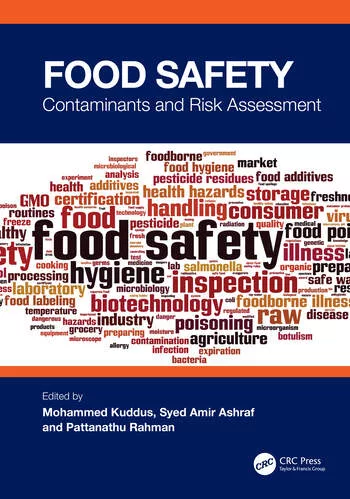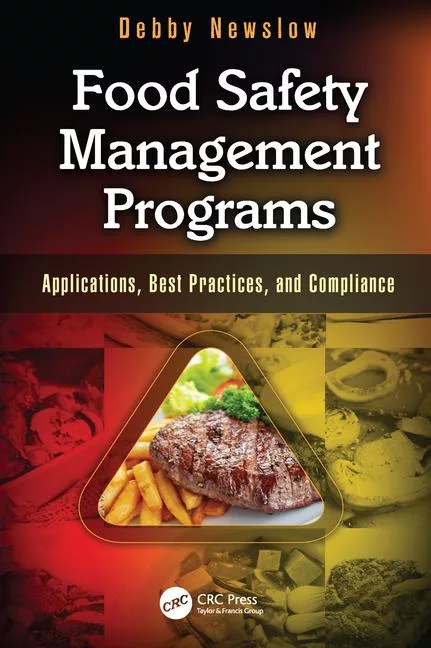FDA’s Obesity Initiative: A Look at Applied Nutrition and Labeling

Traditionally food safety has been associated with efforts to protect the food supply from pathogens, chemical contaminants and physical adulterants and to assure the safety of added food ingredients and packaging materials. Contaminants potentially pose risks to individuals that could result in illness or injury. To ensure the safety of the food supply, preventive programs including Good Agricultural Practices (GAPs), Good Manufacturing Practices (GMPs), and Hazard Analysis and Critical Control Points (HACCP) programs have been developed and implemented. Additionally, consumer education programs such as FightBac! are used to teach the public about steps they can take to protect themselves from foodborne illness.
While the U.S. Food and Drug Administration (FDA) continues to work on programs that target traditional sources of potential foodborne illness, another food related health concern has arisen—overweight and obesity. In contrast to the 5,000 U.S. deaths per year from foodborne illness, it has been estimated that at least 400,000 deaths each year may be attributed to obesity.
A Growing Problem
Overweight refers to increased body weight (in relation to height), when compared to some standard of acceptable or desirable weight. Obesity is defined as an excessively high amount of body fat or adipose tissue in relation to lean body mass. While the bathroom scale may be a good gauge of overweight or obesity, a better indicator is an individual’s body mass index (BMI)—a common measure expressing the relationship (or ratio) of weight-to-height. To calculate an individual’s BMI, a person’s body weight in kilograms is divided by the square of his or her height in meters (i.e., wt/(ht)2).[1] The BMI is more highly correlated with body fat than any other indicator of height and weight. Individuals with a BMI of at least 25 but below 30 are considered overweight, while individuals with a BMI of 30 or more are considered obese. Persons with a BMI over 25 are considered at risk for premature death and disability. The more obese an individual is, the greater are the associated health risks.
In 1998, the National Institutes of Health (NIH) released the first federal guidelines on the identification, evaluation and treatment of overweight and obesity.[2] The guidelines state that obesity and overweight substantially increase the risk of morbidity from hypertension; dyslipidemia; type 2 diabetes; coronary heart disease; stroke; gallbladder disease; osteoarthritis; sleep apnea and respiratory problems; and endometrial, breast, prostate and colon cancers. Higher body weights also are associated with increases in mortality.
According to the U.S. Centers for Disease Control and Prevention (CDC), the incidence of overweight and obesity in the United States has increased at an epidemic rate during the past 20 years. CDC now estimates that 64% of all Americans are overweight and more than 30% are considered obese. Additionally, 15% of children and adolescents ages 6 to 19 are overweight—almost double the rate of two decades ago. In fact, according to a CDC study, poor diet and inactive lifestyle are poised to become the leading cause of death among Americans with an estimated 400,000 deaths in 2000.[3] Further, overweight and obesity aren’t just affecting the health of Americans; they’re affecting their pocketbooks, as well. The total economic cost of obesity in the United States is about $117 billion per year, including more than $50 billion in avoidable medical costs, more than five percent of total annual health care expenditures.[4]
Faced with these numbers the U.S. Department of Health and Human Services (DHHS) began an initiative to combat the overweight and obesity problems many Americans face. As part of this initiative, FDA formed an Obesity Working Group (OWG) that was designed to study the issue and recommend actions within FDA’s purview that address the problem. On March 12, 2004, FDA released the findings of the OWG in a report, which centered on the fact that weight control is primarily a function of caloric balance.[5] The recommendations of the report are rooted in science and take into account consumer and stakeholder views, obtained through public meetings held in October and November 2003, as well as comments submitted to a public docket.[6] Some of the actions recommended require efforts by FDA and others require efforts by industry. All are designed to provide consumers with more information, which will allow them to make healthier dietary choices.
FDA OWG Recommendations
Because the food label is a crucial tool for consumers to measure their intake of calories and monitor the nutritional content of packaged food, there are several approaches in the OWG recommendations that, if implemented, will make a worthy contribution to combat obesity and impact current industry food labeling standards.
The Nutrition Labeling and Education Act (NLEA) of 1990 gave FDA authority to require a Nutrition Facts Panel (NFP) on the label of most packaged foods. The NFP states the standard serving size, the number of calories per serving and the amount and percent of Daily Value (DV) per serving for specified nutrients, based on a 2,000-calorie diet. Following the recommendations of the OWG report, the FDA intends to publish several advance notices of proposed rulemaking (ANPRM) to solicit public comment on components of the food label. These ANPRMs will ask for input on how to give more prominence to calories on the food label; how FDA should authorize health claims on certain foods that meet FDA’s definition of “reduced” or “low calorie”; whether FDA should require additional columns on the NFP to list quantitative amounts and percent DV for the entire package when the product’s contents can reasonably be consumed in one eating occasion; and updating, if needed, the “reference amounts customarily consumed” for certain food categories. In the interim, FDA encourages manufacturers to take advantage of flexibility in the current regulations that allow them to list the entire contents of the package as a single serving when it can reasonably be consumed at a single eating occasion.
Manufacturers also are encouraged to use dietary guidance statements, such as “to manage your weight, balance the calories you eat with your physical activity,” so long as they are not false or misleading.[7] Manufacturers also can use comparative labeling statements that will make it easier for consumers to make healthy food substitutions. An appropriate use of a comparative labeling statement could be: “Apples have less fat than potato chips.” While FDA explores possible changes to the food label, it also intends to pursue enforcement actions against manufacturers that declare inaccurate servings on packages.
In recent years, there has been increased consumer demand for products that are low in carbohydrates. Industry has stepped in to fill that demand. At the moment, there are no regulatory definitions for “low carbohydrate”, “reduced carbohydrate” and “carbohydrate free.” FDA has received petitions from industry sponsors and others who would like the agency to define such terms in its regulations. To ensure that carbohydrate nutrient content claims are consistent and not false or misleading, FDA intends to respond to these petitions in a timely manner. If the agency’s response is favorable, it will publish a proposed rule defining these terms. Additionally, the agency intends to consider whether to issue guidance for the use of the term “net” in relation to carbohydrate content in foods.
Halting and reversing the upward trend of the obesity epidemic will require complementary efforts by government, healthcare providers and the food industry, as well as a commitment to action by individuals and communities across the nation.
Part of the action needed to stem the epidemic is education outreach. The OWG report recommends that FDA develop and implement education programs that help consumers make healthy eating choices. These education programs should be simple to understand and apply, and should focus on motivating consumers to achieve specific goals. Additionally, these programs should be developed in stages to allow flexibility in design so that new research findings, policy decisions and possible changes in the food label can be included. The FDA and DHHS have already begun establishing relationships with youth-oriented organizations such as the Girl Scouts of the USA and the 4-H program. In addition, FDA, along with other components of DHHS, are participating in the “Shaping America’s Youth” initiative to identify actions being taken to address childhood and adolescent inactivity and excess weight.
As education outreach occurs across various private and public sectors, FDA is encouraging consumers to be proactive in educating themselves when dining out. It has been reported that American households spend approximately 46% of their total food budget on food consumed outside the home.[8] In fact, from 1994 to 1996, food consumed outside the home, especially from restaurants, including “quick service” establishments, contributed 32% of daily intake of energy calories, 32% of added sugars and 37% of the fat.[9]
According to NLEA, restaurants are under no obligation to provide nutrition information for a menu item or meal unless a nutrient-content claim (e.g., “low,” “free,” “reduced”) or a health claim (e.g., “diets low in saturated fat, trans fat and cholesterol may reduce the risk of heart disease”) is made for the item or meal. When a claim is made, the restaurant need only provide information on the amount of the nutrient that is the basis of the claim. This information can be provided in various ways, including on wrappers, tray liners, brochures or posters. Restaurants are not required to provide any nutrition information on items for which claims are not made.
Therefore, FDA, in taking the recommendation of the OWG, is recommending that consumers routinely request nutrition information when dining out. Based on the panel discussion at the November 2003 public meeting, the restaurant industry does indeed respond to consumer demands. This is evidenced by the “healthy menu” meals that some restaurant chains provide to their customers. FDA also is recommending that the restaurant industry develop a pilot program to study effective options for simple, voluntary, standardized nutrition information at the point-of-sale.
While weight management is most effective when there is a balance between the calories consumed and the calories expended (via metabolism and physical movement), some individuals may require medical treatment or attention to tackle the problem of obesity. Recognizing this fact, FDA plans to revise and reissue the 1996 draft Guidance for the Clinical Evaluation of Weight-Control Drugs.
Toward Lifelong Change
Maintaining a healthy diet and a healthy lifestyle are not one-time events. Rather, they require an ongoing, lifelong effort on the part of individuals. Similarly, nutrition science is a field that continues to evolve. With the emergence of new research, our understanding of the dietary impact of different foods constantly changes, and this means that dietary recommendations may change as well. In fact, the government’s Dietary Guidelines Committee, a joint effort of both DHHS and USDA, is currently deliberating to revise the official “Dietary Guidelines for Americans,” which slated to be reissued later this year.[10] In the midst of all this change in the field of nutrition, and because good nutrition is such an important contributor to the health and well-being of the American public, FDA is committed to revitalizing its applied nutrition program and to making the best possible science available to consumers.
Kimberly A. Rawlings is a public affairs specialist for the U.S. Food and Drug Administration. She has nearly 10 years of experience in the field of public affairs and has worked for the FDA since 2000.
References
1. CDC. Defining Overweight and Obesity. www.cdc.gov/nccdphp/dnpa/obesity/defining.htm#BMI
2. NIH. Clinical Guidelines on the Identification, Evaluation, and Treatment of Overweight and Obesity in Adults. www.nhlbi.nih.gov/guidelines/obesity/ ob_home.htm.
3. Journal of the American of Medical Association, 29(10). March 10, 2004.
4. CDC. Physical Activity and Good Nutrition: Essential Elements to Prevent Chronic Diseases and Obesity. www.cdec.gov/nccdphp/cag/cag_dnpa.htm.
5. FDA. Calories Count: Report of the Working Group on Obesity. www.cfsan.fda.gov/udms/owg_toc.html.
6. FDA Docket No. 2003N-0338. Obesity Working Group; Public Meeting and Food Labels, Packaging, Restaurants, and Weight Management; Public Workshop; Amendment of Notice. www.fda.gov/ohrms/dockets/98fr/03-25645.htm, and www.fda.gov/ohrms/ dockets/98fr/03-28953.htm.
7. Federal Food Drug and Cosmetic Act, Section 403 (a).
8. U.S. Department of Agriculture, Economic Research Service. Food CPI, Prices, and Expenditures:Food And Alcoholic Beverages:Total Expenditures. Table 1. Washington, DC. 2003. And National Restaurant Association. 2004 Restaurant Industry Forecast Executive Summary. www.restaurant.org/pdfs/research/
2004_forecast_execsummary.pdf.
9. U.S. Department of Agriculture, Economic Research Service. Daily Food Consumption at Different Locations: All Individuals Ages 2 and Older. Daily Diet and Health: Food Consumption and Nutrient Intake Tables. Table 5. Washington, DC. 2000.
10. Nutrition and Your Health: Dietary Guidelines for Americans. www.health.gov/dietaryguidelines.
Looking for quick answers on food safety topics?
Try Ask FSM, our new smart AI search tool.
Ask FSM →








